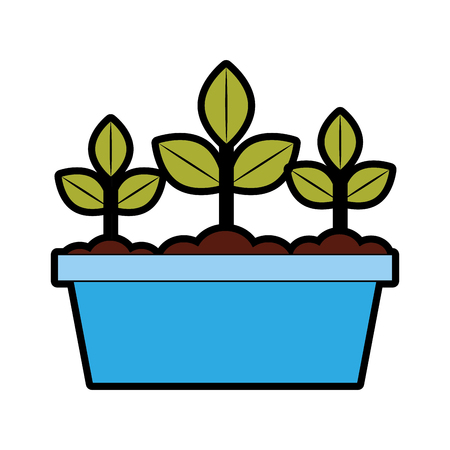1. Set Seasonal Goals and Garden Priorities
Planning a successful year-round garden starts with setting clear seasonal goals and identifying your top gardening priorities. Each season offers different opportunities, so it’s important to think ahead and map out what you want to achieve during spring, summer, fall, and winter.
Know Your USDA Hardiness Zone
Before you set your goals, find out your local USDA hardiness zone. This will help you determine which plants can thrive in your area and when to plant them. You can check your zone on the USDA Plant Hardiness Zone Map online. Also consider your microclimate—factors like sun exposure, wind patterns, and soil type in your yard may affect how plants grow.
Define Your Seasonal Objectives
Think about what you want from your garden each season. Do you want to grow fresh vegetables? Add color with flowering plants? Improve your landscape design? Here’s a simple table to help guide your planning:
| Season | Planting Goals | Harvest Targets | Aesthetic Improvements |
|---|---|---|---|
| Spring | Start cool-season crops like lettuce, spinach, peas | Harvest early greens and herbs | Plant spring bulbs and add mulch for clean borders |
| Summer | Plant warm-season crops like tomatoes, peppers, beans | Harvest peak vegetables and fruit | Add colorful annuals and maintain lawn edges |
| Fall | Sow fall crops like kale, carrots, garlic | Gather late harvests and preserve produce | Add autumn flowers and prepare beds for winter |
| Winter | Plan next year’s layout; start seeds indoors if possible | N/A (unless growing in a greenhouse) | Add compost; prune trees and shrubs as needed |
Tailor Your Plan to Fit Your Lifestyle
Your garden should reflect not just the seasons but also your lifestyle. If youre short on time, aim for low-maintenance plants or focus on one main goal per season. If you enjoy being outside daily, try more diverse projects. Setting realistic goals helps keep gardening enjoyable instead of overwhelming.
Quick Tips:
- Create a garden journal: Write down your goals for each season along with planting dates and notes.
- Pace yourself: Spread tasks over weeks so youre not doing everything at once.
- Be flexible: Weather and life happen—adjust your plans as needed.
By setting seasonal goals based on your location and lifestyle, youll build a productive routine that keeps your garden thriving all year long.
2. Create a Year-Round Garden Calendar
Planning your garden tasks by month or season is one of the most effective ways to stay organized and productive all year long. A garden calendar helps you keep track of what needs to be done based on your region’s climate, frost dates, and growing seasons. Whether youre in a warm southern state or a colder northern area, adjusting your schedule to local conditions ensures better results.
Break the Year into Manageable Segments
Start by dividing your gardening year into monthly or seasonal sections. This makes it easier to plan and prevents overwhelm. Here’s a general breakdown you can customize based on your USDA hardiness zone:
| Month/Season | Key Tasks |
|---|---|
| January – February | Plan your garden layout, order seeds, start seeds indoors for cool-season crops like lettuce and broccoli (in colder regions), prune dormant trees and shrubs |
| March – April | Start more seeds indoors (tomatoes, peppers), begin transplanting hardy seedlings outdoors (depending on last frost date), prepare garden beds, apply compost |
| May – June | Transplant warm-season crops outside (like tomatoes, beans, squash), mulch garden beds to retain moisture, begin regular weeding and watering routines |
| July – August | Harvest early crops, plant fall crops such as kale and carrots, monitor for pests and diseases, continue watering during hot months |
| September – October | Harvest late-summer crops, start cool-weather crops depending on zone, clean up garden beds, save seeds from healthy plants |
| November – December | Add mulch or cover crops to protect soil over winter, service tools and equipment, review what worked well this year and make notes for next season |
Adjust Based on Your Local Weather Patterns
The exact timing of these tasks will vary depending on where you live. For example, gardeners in Southern California may be planting when those in Minnesota are still snowed in. Use resources like your local extension office or USDA hardiness zone map to tailor the calendar to your area.
Helpful Tips:
- Mark important dates like average last frost and first frost on your calendar.
- Create reminders for starting seeds indoors about 6–8 weeks before transplanting outdoors.
- Note down when to fertilize different types of plants — leafy greens need nitrogen-rich fertilizer early on, while fruiting plants benefit from phosphorus later in the season.
- If you have perennials or fruit trees, schedule pruning during their dormant periods.
Your Personalized Garden Journal
Consider keeping a simple garden journal or using a digital planner app where you can record what was planted when, weather notes, pest problems, and harvest dates. Over time, this becomes an invaluable tool that helps you fine-tune your gardening rhythm year after year.

3. Organize Tasks by Garden Area
To keep your garden thriving all year long, its helpful to break it down into zones and organize tasks specific to each area. Dividing your garden this way makes it easier to manage, helps you stay consistent with maintenance, and prevents any one section from being overlooked.
Divide Your Garden into Zones
Start by identifying the different types of spaces in your garden. Common zones include:
- Vegetable Beds
- Flower Borders
- Fruit Trees or Orchard Areas
- Herb Gardens
- Lawn and Turf
- Compost and Tool Storage Areas
Once youve mapped out your zones, you can assign seasonal tasks to each one. This approach helps distribute the workload evenly and ensures no area is neglected during busy times of the year.
Create a Task Schedule for Each Zone
Every zone has its own set of needs depending on the season. Heres an example schedule you can adapt to fit your own garden:
| Garden Zone | Spring Tasks | Summer Tasks | Fall Tasks | Winter Tasks |
|---|---|---|---|---|
| Vegetable Beds | Sow seeds, prep soil, install supports | Weed, water regularly, harvest crops | Plant fall veggies, mulch beds | Add compost, plan crop rotation |
| Flower Borders | Cut back dead growth, plant perennials | Deadhead blooms, control pests | Divide crowded plants, collect seeds | Protect with mulch, prune shrubs if needed |
| Fruit Trees | Prune trees, apply dormant spray if needed | Thin fruit, water deeply during dry spells | Harvest fruit, remove fallen debris | Check for disease, perform winter pruning (if applicable) |
| Lawn and Turf | Aerate soil, overseed bare spots | Mow regularly, adjust watering as needed | Dethatch, apply fall fertilizer | Avoid foot traffic on frozen grass, sharpen mower blades for spring |
Use a Calendar or Garden Journal
You can use a physical garden planner or a digital calendar to track when each task should be done. Apps like Google Calendar or gardening-specific tools such as Planter or From Seed to Spoon let you set reminders for recurring jobs based on plant type and local climate.
Tip:
If youre just starting out, begin with a few key zones rather than trying to manage everything at once. As you build confidence and routine, you can expand your schedule to cover more areas.
4. Utilize Tools and Apps for Tracking
Staying on top of your garden tasks throughout the year can be a challenge, especially when youre juggling planting schedules, harvest windows, and routine maintenance. Fortunately, there are plenty of tools and apps that can make tracking your gardening activities much easier and more efficient.
Leverage Gardening Apps
There are several gardening apps designed specifically to help home gardeners manage their space, track plant growth, and stay organized. Apps like Planter, From Seed to Spoon, and Gardenize allow you to input your garden layout, set reminders for key tasks, and log plant progress over time. Most of these apps offer alerts based on your USDA hardiness zone, so you’ll get timely tips tailored to your region.
Use Digital Calendars
A simple way to keep track of important dates is by using a digital calendar like Google Calendar or Apple Calendar. You can color-code different tasks—such as planting, fertilizing, pruning, or harvesting—and set recurring events for seasonal chores. Setting alerts ensures you never miss time-sensitive jobs like hardening off seedlings or rotating crops.
Create a Gardening Spreadsheet
If you prefer a more customized approach, building your own gardening spreadsheet can be incredibly useful. Use it to record planting dates, expected germination times, days to maturity, and actual harvest dates. This helps you plan better in future seasons and identify which varieties perform best in your garden.
Sample Gardening Task Tracker Table
| Task | Date Scheduled | Frequency | Notes/Reminders |
|---|---|---|---|
| Start Tomato Seeds Indoors | March 1 | Once per season | Use heat mat; check daily for moisture |
| Harden Off Seedlings | April 15 | Annually | Move outside gradually over 7 days |
| Rotate Crops in Raised Beds | October 1 | Yearly | Avoid planting same family in same bed two years in a row |
| Add Compost to Beds | November 10 | Twice per year | Mix well into topsoil before frost sets in |
Set Reminders for Seasonal Tasks
Certain gardening tasks are highly time-sensitive—forgetting them can mean reduced yields or stressed plants. Use apps or calendar notifications to remind you about:
- Hardening off seedlings: Begin about one week before transplanting outdoors.
- Crop rotation: Schedule at the end of each growing season to prevent soil nutrient depletion and reduce pests.
- Pest control checks: Set biweekly reminders during the growing season to inspect plants for damage.
- Irrigation system checks: Monthly reminders ensure everything is working efficiently and leaks are caught early.
The more you automate your tracking process, the less likely you are to overlook key steps in your gardening journey. Whether youre a tech-savvy grower or just starting out, finding the right tools will help you build a productive, low-stress routine all year long.
5. Prepare for Unexpected Weather and Pests
No matter how carefully you plan your garden schedule, nature can always throw a curveball. Sudden cold snaps, heatwaves, or pest infestations can disrupt even the best-laid plans. To stay on track and protect your hard work, its smart to build some flexibility into your gardening routine.
Plan Buffer Time Into Your Garden Schedule
When organizing your garden calendar, leave room between major tasks like planting, pruning, or harvesting. This buffer time allows you to deal with unexpected events without falling behind. For example, if a late frost delays spring planting, having an extra week in your schedule can help you stay on pace.
Keep Essential Supplies On Hand
Being prepared with the right tools means you can act fast when surprises happen. Here’s a simple checklist of useful items to keep in your garden shed:
| Item | Use |
|---|---|
| Frost Cloths | Covers plants during unexpected cold weather |
| Row Covers | Protects crops from insects and helps regulate temperature |
| Diatomaceous Earth | A natural pest deterrent for soft-bodied insects |
| Neem Oil Spray | An organic solution for aphids, mites, and fungal issues |
| Floating Row Netting | Keeps out birds and larger pests without using chemicals |
Create a Quick-Response Garden Kit
You don’t want to be scrambling when bad weather hits or pests appear overnight. Keep all emergency supplies in one place so you can react quickly. Label a storage bin “Garden Emergency Kit” and stock it with covers, clips, sprays, gloves, and any other seasonal must-haves.
Pest and Weather Readiness Tips:
- Check forecasts weekly: Adjust your watering or protection strategies accordingly.
- Inspect plants regularly: Catch pest problems early before they spread.
- Create a rotation plan: Rotating crops helps prevent soil-borne diseases and pest buildup.
A little preparation goes a long way toward keeping your garden healthy and productive all year long—even when Mother Nature doesn’t play fair.
6. Evaluate and Adjust Your Plan Throughout the Year
Sticking to a gardening schedule is important, but being flexible is just as crucial. As the seasons change, your gardens needs will shift too. Taking time at the end of each season to reflect on what worked and what didn’t can make a big difference in your success throughout the year.
Why Seasonal Reviews Matter
Your garden isn’t static—weather, pests, soil conditions, and even your available time can vary from season to season. That’s why it’s helpful to pause and evaluate regularly. Doing so helps you stay on track with your goals while making room for improvements.
What to Review Each Season
Here are some key things to check at the end of every season:
| Review Area | Questions to Ask |
|---|---|
| Plant Performance | Which plants thrived? Which ones struggled? |
| Pest and Disease Issues | Did any pests or diseases show up? How did you handle them? |
| Timing and Tasks | Were you able to stick to your schedule? Were any tasks too early or too late? |
| Garden Layout | Did your plant placement work well? Was there enough space or sunlight? |
| Tools and Supplies | Did you have everything you needed? Did anything break or go unused? |
How to Make Adjustments for Next Season
After reviewing, use what youve learned to tweak your plan. Maybe you need to start seeds indoors earlier next spring, or perhaps a different variety of tomatoes would perform better in your climate. Small changes add up over time and lead to a more productive garden.
Tips for Adjusting Your Garden Plan
- Keep notes: Write down successes and challenges in a garden journal or digital app.
- Use reminders: Set calendar alerts for new tasks based on past experiences.
- Stay flexible: Weather can be unpredictable, so be ready to adjust dates as needed.
- Try new things: Don’t be afraid to experiment with different crops or techniques.
A Flexible Plan Keeps You Growing
The most successful gardeners aren’t the ones who follow a rigid plan—they’re the ones who learn from their gardens and adapt along the way. By evaluating each season and making thoughtful adjustments, you’ll keep your garden healthy, productive, and enjoyable all year long.


